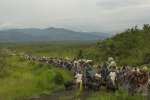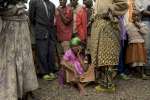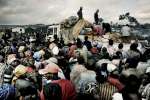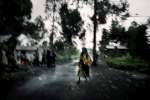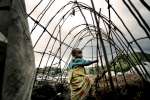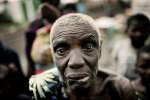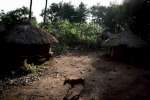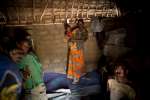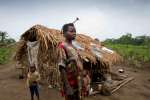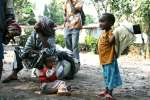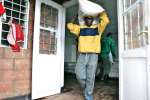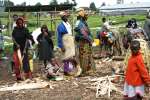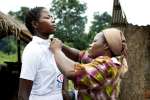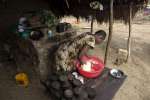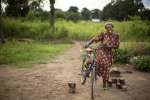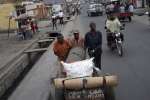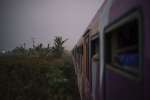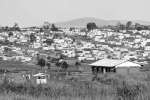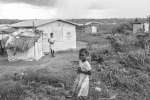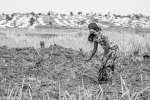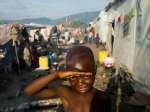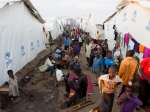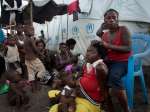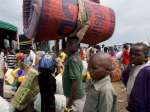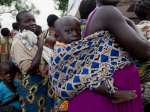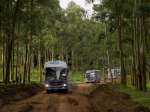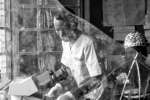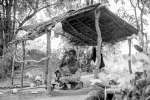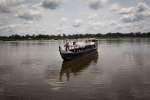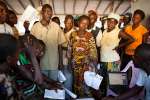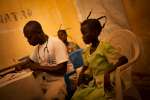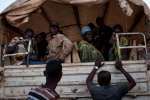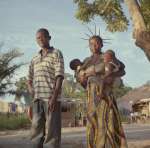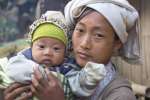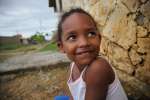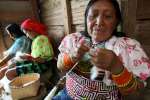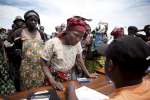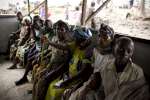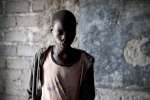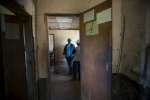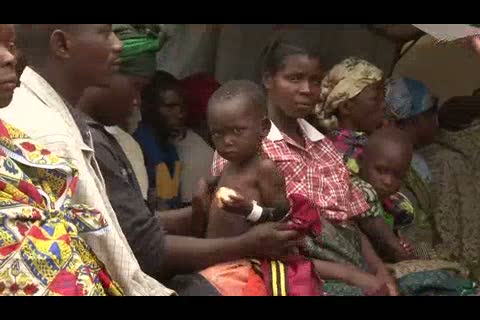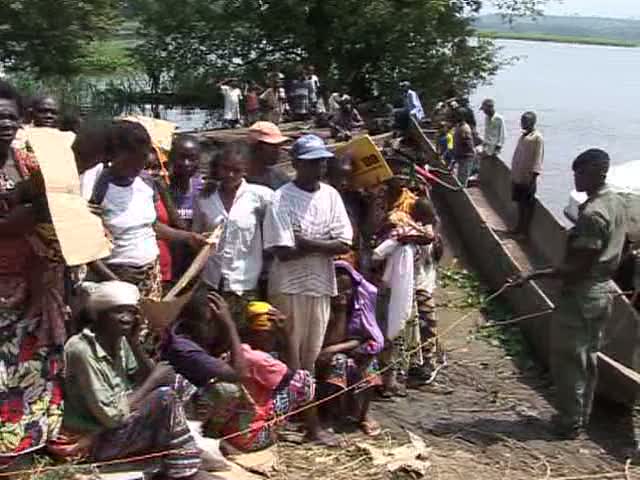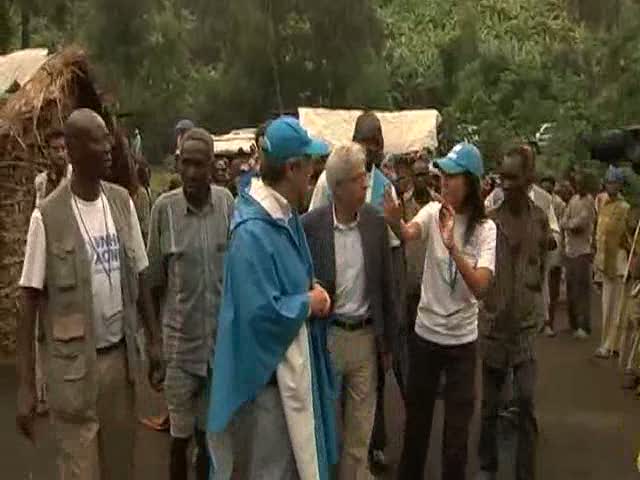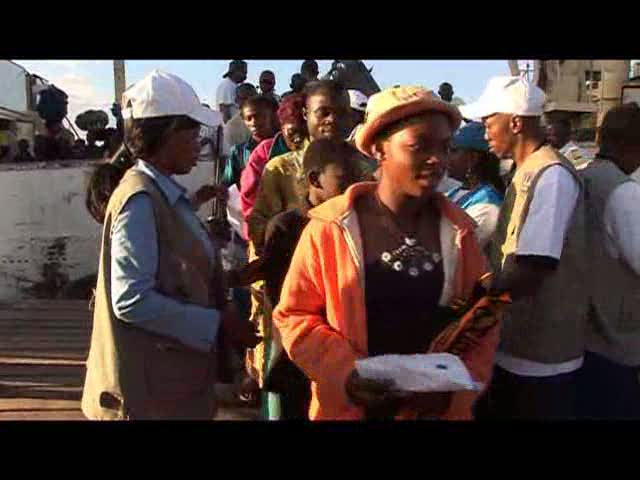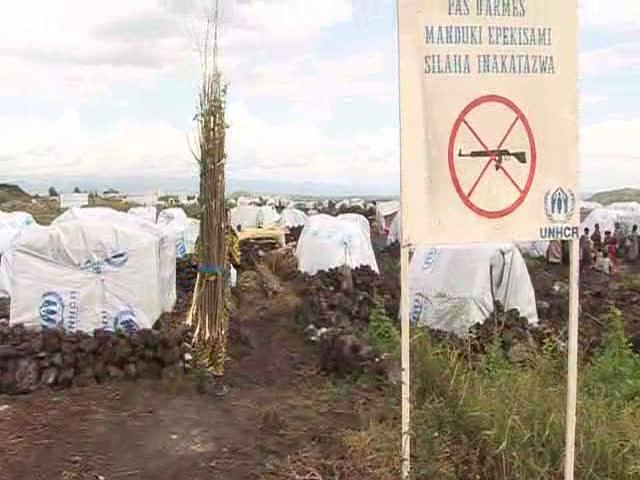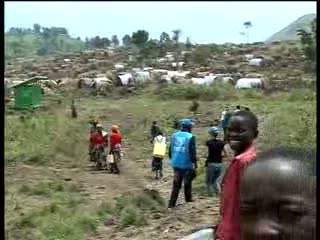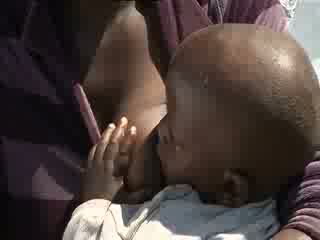Home > Where We Work > Africa > Central Africa and the Great Lakes > Democratic Republic of the Congo
2015 UNHCR country operations profile - Democratic Republic of the Congo
| Overview |
Working environment
-
The Democratic Republic of the Congo (DRC) is characterized by ongoing conflict, poor or non-existent infrastructure and highly challenging logistics, all of which make access to refugees and other populations of concern quite difficult. Due mainly to the conflict in the eastern part of the country, approximately 430,000 refugees from the DRC remain in neighbouring countries, particularly Burundi, Rwanda, Uganda and the United Republic of Tanzania.
-
As of August 2014, approximately 70,000 refugees from the Central African Republic (CAR) who sought refuge from the deteriorating situation in their country of origin benefitted from UNHCR's protection and assistance activities in the DRC, in addition to refugees from Burundi and Rwanda.
-
The scale of displacement within and outside the DRC remains serious. There are some 2.7 million internally displaced people (IDPs) within the country in 2014 due to ongoing armed conflict in the east. UNHCR has the leading role in the protection cluster, as well as in the shelter cluster, and plays a significant role in the camp coordination and camp management (CCCM) cluster working groups.
-
Tripartite agreements for the voluntary repatriation of Congolese (DRC) refugees exist with neighbouring countries but ongoing insecurity hampers large-scale repatriation to the east of the DRC.
People of concern
The main groups of people of concern to UNHCR in 2015 include: refugees from the CAR who fled insecurity and violence in their country; IDPs living in camps or with host families who fled the armed conflict in the east; Angolan refugees residing in the DRC who have not opted for voluntary repatriation following the application of the cessation clause or have been exempted; Rwandan refugees in the eastern DRC; and Congolese (DRC) returnees who have been repatriated from neighbouring countries, particularly Burundi, the CAR, the Congo and Uganda.
| UNHCR 2015 planning figures for Democratic Republic of the Congo | |||||
|---|---|---|---|---|---|
| Type of population | Origin | January 2015 | December 2015 | ||
| Total in country | Of whom assisted by UNHCR |
Total in country | Of whom assisted by UNHCR |
||
| Total | 3,890,830 | 2,654,370 | 3,793,290 | 2,606,840 | |
| Refugees | Central African Rep. | 75,000 | 25,000 | 50,000 | 30,000 |
| Rwanda | 129,440 | 20,000 | 109,440 | 20,000 | |
| Various | 2,150 | 2,150 | 2,240 | 2,240 | |
| Asylum-seekers | Burundi | 280 | 280 | 190 | 190 |
| Rwanda | 110 | 110 | 140 | 140 | |
| Somalia | 20 | 20 | 20 | 20 | |
| Various | 130 | 130 | 110 | 110 | |
| Returnee arrivals during year (ex-refugees) | Dem. Rep. of the Congo | 53,640 | 53,640 | 41,100 | 41,100 |
| Internally displaced | Dem. Rep. of the Congo | 2,658,000 | 1,860,600 | 2,658,000 | 1,860,600 |
| Returnee arrivals during year (ex-IDPs) | Dem. Rep. of the Congo | 932,060 | 652,440 | 932,060 | 652,440 |
| Others of concern | Angola | 40,000 | 40,000 | - | - |
| Response |
Needs and strategies
In 2015, refugees from the CAR will benefit from protection and multi-sectoral assistance in camps and host communities, where access permits. To reduce dependency on food aid, particular attention will be placed on promoting self-reliance and livelihoods activities. Starting with a nutritional survey to be conducted in June 2015, a differentiated strategy will be designed and pursued to reduce dependency, through the reduction of food assistance to refugees.
The repatriation of Angolan refugees from the DRC is expected to end by 30 June 2015. Also, the local integration process for the remaining Angolan refugees will continue to be implemented, with a view to phasing it out by 2016.
Refugees will continue to be registered and to receive documentation that enhances their protection. The identification and implementation of appropriate durable solutions will also be the focus of UNHCR's work in the DRC, while continuing to monitor permanent access to asylum and respect for the principle of non-refoulement for those who seek international protection. UNHCR will work with the Government and communities to minimize risks of sexual and gender-based violence (SGBV) and other human rights violations. With the authorities, it will also seek to assure the civilian character of asylum.
Through community outreach and work with civil society, UNHCR will also support community-based protection and greater self-reliance among urban refugee households with specific needs.
The Office will continue to seek durable solutions for Congolese (Republic of the Congo) and Rwandan refugees, within the framework of the existing tripartite agreements and the comprehensive strategy for the Rwandan refugee situation.
To advance the reintegration of DRC returnees, the Office will promote peaceful coexistence by conducting reconciliation and conflict-resolution activities in local communities, pursuing and encouraging the involvement of other UN agencies and development actors, while addressing basic education, health and shelter needs within a comprehensive protection framework.
UNHCR's IDP strategy will be based on its efforts in assisting the Government to enact IDP legislation and, if possible, assist its implementation both technically and operationally together with all relevant actors in the country. UNHCR will also encourage community-based protection, in collaboration with the full range of partners, and support the development of a return-conducive environment. UNHCR's coordination role in the protection cluster will continue to aim at strengthening protection activities, projects and advocacy efforts, with particular attention to protection of IDPs from SGBV and from the physical and psychological effects of conflict. UNHCR is part of a national strategy to combat SGBV, coordinating working groups to prevent SGBV and implementing the Safe Access to Fuel and Energy (SAFE) approach.
| Implementation |
Coordination
In 2015, UNHCR's main governmental partner in the DRC will continue to be the Commission Nationale pour les Réfugiés within the Ministry of Interior, particularly in the areas of refugee registration and assistance.
Leading the protection and shelter clusters in the context of internal displacement, UNHCR will continue to collaborate with national and international partners present in the country, and support building the capacity of partner NGOs.
As lead of the Protection and Prevention Pillar of the National Strategy to combat SGBV in the DRC, UNHCR will continue to coordinate the Protection and Prevention Working Groups in eastern DRC and to co-lead the SAFE approach with the Ministry of Gender.
| 2015 UNHCR partners in Democratic Republic of the Congo |
|---|
| Implementing partners |
| NGOs: Agence de Développement Économique et Social, Agir pour le Genre, Association pour le Développement Social et la Sauvegarde de l'Environnement, Actions et Interventions pour le Développement et l'Encadrement Social, African Initiatives for Relief and Development, Cooperazione Internationale, Encadrement des Réfugiés Urbains de Kinshasa, International Emergency and Development Aid, INTERSOS, Mouvement International des Droits de l'Enfant, de la Femme, de l'Homme veuf et de leur Promotion Sociale, Search for Common Ground, Terre Sans Frontières, Women for Women International |
| Operational partners |
| Government agencies: Commission Nationale pour les Réfugiés |
| Others: FAO, UNFPA, UNICEF, WFP, WHO, UN-Women |
| Financial information |
The financial requirements for UNHCR's operation in the DRC increased from USD 139.6 million in 2011 to a revised 2014 budget of USD 216.4 million. This was mainly due to the ongoing influx of refugees from the CAR, as well as continued IDP movements and the return of Congolese (DRC) refugees from neighbouring countries.
In 2015, the financial requirements for the DRC are set at USD 216.3 million in anticipation of the growing number of Central African refugees. Unmet needs in food security, health, water and sanitation, non-food items, shelter and education would impact UNHCR's protection mandate and put refugees at risk of exploitation and SGBV.
Source: UNHCR Global Appeal 2015 Update


















